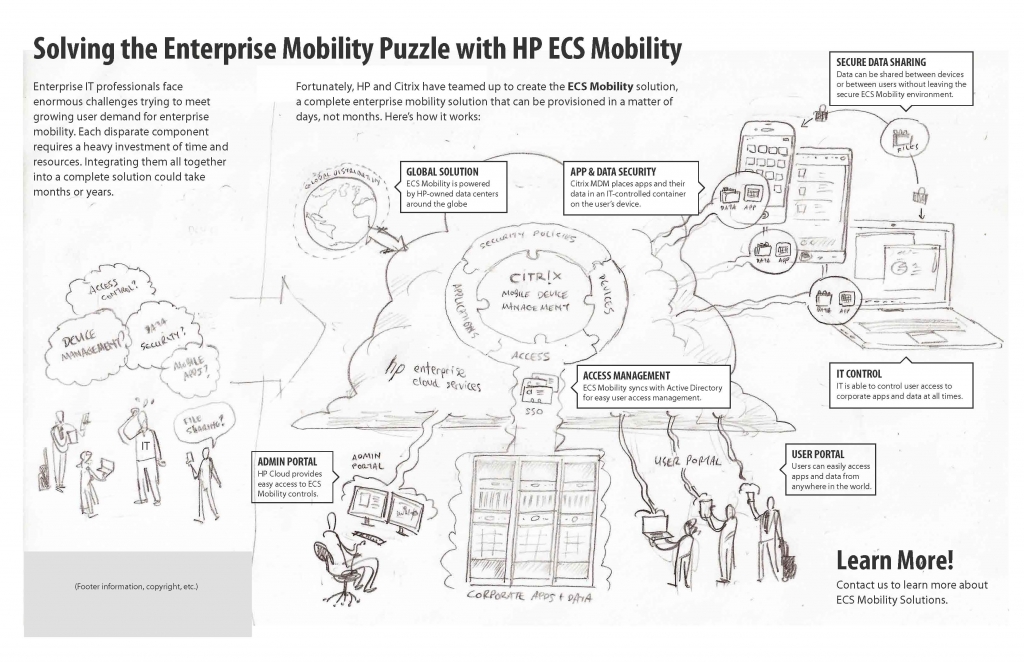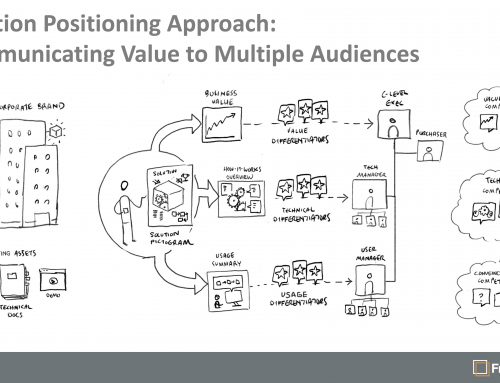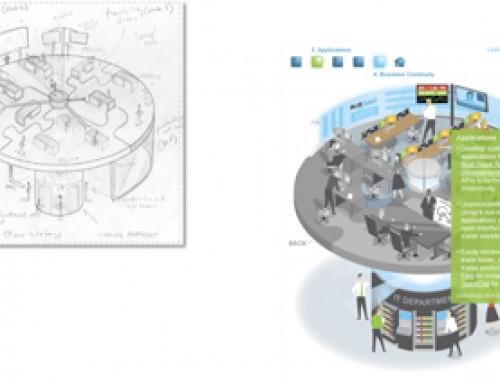It All Starts at the Whiteboard
When coming up with new solutions or approaches or augmenting solutions or combining different solutions with your product group its very difficult not to go to whiteboard and sketch ideas out. It’s so rudimentary to the product development process, that it’s difficult to argue for it. But thinking about it – there is an appeal to having an attempt at what the solution is and its value for a particular use case – all in one encompassing visual. And then the team can debate the new solution’s merits over one common visual – making changes on the fly. Not to be over dramatic – but it would be a challenge to develop the solution restricted to only verbal conversation. There is a primordial need to get something down on paper – or whiteboard.

White-boarding is a good place to start for content marketing as well.
The Incredible Gap Between Product Development and Content Marketing
And then all the juicy nuanced white-boarding content development abruptly stops when the solution moves over to the marketing department. Instead, there are concerns of bringing this content into pre-existing corporate brand. Huge emphasis is placed on whether current logos and colors and the correct office photograph of executives in action has the right color filter and cropped consistent to corporate brand. And those white-boarding sessions that brought the solution to life become a distant memory. The actual sketches have been removed from the whiteboard by the cleaner long ago and now the only testament to that visual ideation that brought the solution to life is a product spec document and eventually a user manual and perhaps some product screenshots. And now the sales effort armed with branded presentations with only stock branded graphics explaining the new offerings must deal with the busy VP decision-maker who is begging for a clear sense of what is the point of the offering. And there is nothing in brand photos and screenshots and table of features and benefits that gets to the heart of the matter. The magic of the whiteboard sketches that convinced the team of its merits has been killed with stock graphic images blessed by the brand department.

A sample of an ideation sketch
Back to that Whiteboard
Here at Frame Concepts, we start every visual content project with a blank page and a pencil sketch. Instead of coming up with a solution, we are coming up with “the explanation” of the solution to show both the point and the value to the intended audience. And we try to do this within the space of a back of a cereal box. Initially, we do not care about brand or logo’s or screenshots or stock photo and art. We care conceptually about framing the solution visually in the most engaging way. And while the marketing team is present, the subject matter experts (SME’s) who developed the solution are also present on the kickoff call and review each pencil sketch iteration and each branded render iteration to final deliverable.

A Rendered Visual
Whiteboard Sketching Done by an Information Designer/Illustrator
The magic on the blank page is done not by a graphic designer, nor by a member the brand department – but by an information designer/illustrator. They are information hungry artists whose sole goal is to get to the essence of the content and sketch it out so it’s easily visually digestible immediately. This could be a large spot illustration suggestive of a key metaphor or analogy or it could be a data visualization distilling the key take away or any combination thereof. Whatever speaks to the solution. The key is that the only master being served with the ideation sketch is ensuring the audience is getting the point visually. Brand concerns become a downhill ride once the key visual concept is concluded.

An Ideation Sketch that Shows a “White-boarding” type approach in action
The State of the Content Marketing Industry
Unfortunately even a casual glance across the large tech and consulting firms websites reveals that the white-boarding approach they use to come up with solutions and approaches have not been embraced by the content marketing team. Instead, the bulk of the visual real estate, even in the solution section of the website, is typically mostly text with a scattering of a few branded photos or product screenshots. The attempt to ideate and visually communicate the point has simply been abandoned. And so in early conversations with members of the content marketing team and our (Frame Concept’s) ideation sketching approach on the question of whether they are equipped to visually explain the offering – the typical reply is that they have design looked after with brand and graphic designers. And I know they don’t.







